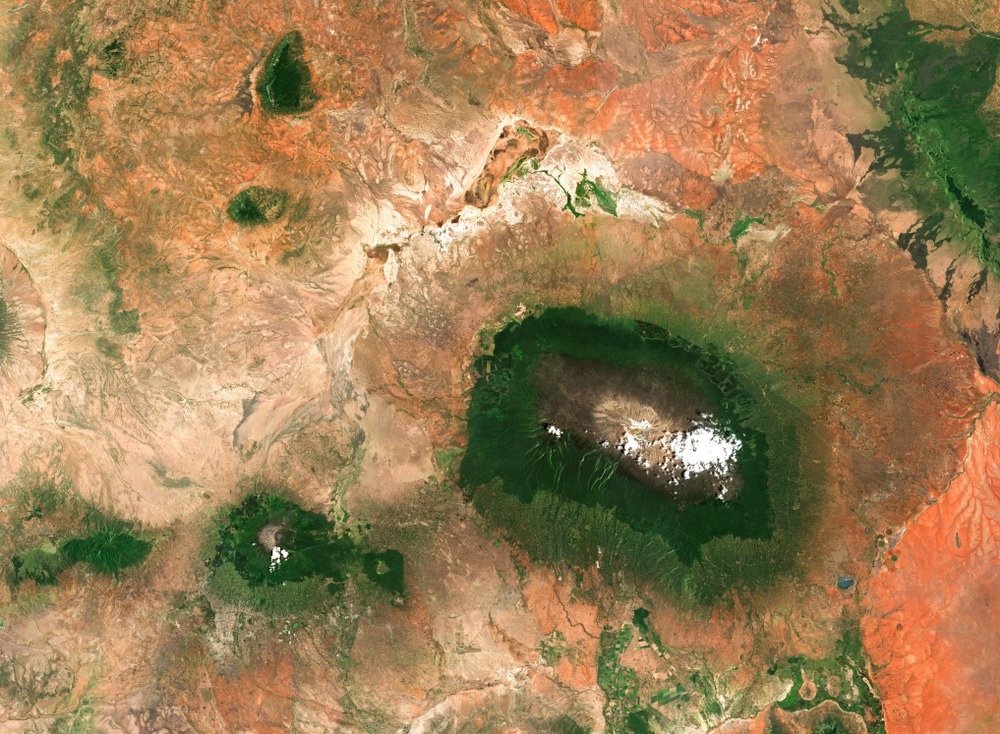In an article published in the journal Sensors, researchers have designed a novel non-linear prior and developed a corresponding algorithm to help restore remote sensing images.

Study: Blind Remote Sensing Image Deblurring Based on Overlapped Patches' Non-Linear Prior. Image Credit: Willem Tims/Shutterstock.com
The surroundings and imaging equipment contribute to blurring issues in actual imaging operations. As a result, image restoration technology has increasingly drawn researchers' interest and grown into an essential area of image processing to eliminate blurring.
Image Degradation Process
The simplest way to sum up the optimum image deterioration process is
Y = K * X + N,
Where * denotes the convolution operator and N, X, K and Y indicate noise, original clear image, blur kernel, and the observed blurry picture, respectively.
When the blur kernel and clear picture are solved simultaneously, the blurring issue becomes an ill-conditioned problem with an unlimited number of solutions since the reason for the blurring is unknown. By employing picture information to improve the equation, a classic blind image deblurring method seeks the best overall solution, or the blur kernel, before applying a non-blind image deblurring technique to produce a clear image. The complexity and variety of real-world settings make it impossible for parametric models to adequately characterize the blur kernel, making them unsuitable for picture restoration.
Maximum A Posterior (MAP) and Variable Bayesian (VB)
Maximum A Posterior (MAP) and Variable Bayesian (VB), based on probability theory and statistics, are the two main frameworks used in traditional picture restoration techniques.
Most methods use the MAP framework, despite the VB framework being more stable when the computation and complexity of the algorithm are taken into account.
The current MAP techniques with a sparse derivative prior tend to the trivial solutions. However, adopting suitable criteria may make the MAP framework avoid this issue. According to the MAP framework, it is possible to solve the standard maximum posterior probability and the blur kernel and clear picture simultaneously.
Edge Information and Channels
Edge information, one of the most noticeable aspects of photographs, has long been crucial to image recovery algorithms. To accomplish the required deblurring, it is essential to utilize prior knowledge as the core, which can differentiate between clear photos and fuzzy images, and employ image edge information as an auxiliary. Channels are separate planes that house an image's color data. Since it has been shown that dark channel pixels distribution differs dramatically between clear and hazy pictures, the prior channel has steadily become the focus of researchers.
Remote Sensing Image Restoration
In this study, to handle remote sensing picture restoration, the researchers constructed a novel non-linear prior and developed the corresponding algorithm. When extracting features from an image, this approach does not traverse each picture pixel but rather the patches split by the image, which helps to increase operational efficiency further and minimize the amount of time needed for the process.
How the Research was Conducted
Each patch has a small amount of overlap to capture more precise feature data. The local minimum and maximum intensity sets are then created using the extreme pixels of each patch.
The non-linear prior utilized by the researchers was a convex L1-norm restriction on the ratio of matching items in the two local intensity sets.
By investigating more than 5000 remote sensing photos, OPNL preferred clear images over fuzzy ones. However, the picture restoration model based on the OPNL prior is challenging to solve directly. Therefore, the researchers employed the half-quadratic splitting approach to break the model into several simpler sub-problems.
Based on OPNL prior, a novel deblurring technique for remote sensing images is created that maintains strong convergence and stability. The results of the experiments demonstrate that the suggested technique performs better than the alternative methods in handling hazy remote-sensing photos. The approach may still provide very competitive deblurring results even when dealing with remote sensing images with complex textures and many features.
Conclusion
By switching the method of obtaining picture characteristics from traversing all pixels to patches split from the image that partly overlap, the researchers could lower the algorithm's computational complexity and running time.
These image features were constructed using the matching picture deblurring technique and the overlapping patches' non-linear prior, which has been shown to prefer clear images in the energy minimization issue and is based on the extreme pixels taken from each patch.
Numerous comparison studies have shown that this approach produces superior remote sensing picture restoration outcomes than other algorithms. Furthermore, this technique can still successfully recover acceptable pictures even when dealing with distant sensing photos that include intricate texture features.
Reference
Ziyu Zhang, Liangliang Zheng , Wei Xu, Tan Gao , Xiaobin Wu and Biao Yang (2022) Blind Remote Sensing Image Deblurring Based on Overlapped Patches' Non-Linear Prior. Sensors. https://www.mdpi.com/1424-8220/22/20/7858
Disclaimer: The views expressed here are those of the author expressed in their private capacity and do not necessarily represent the views of AZoM.com Limited T/A AZoNetwork the owner and operator of this website. This disclaimer forms part of the Terms and conditions of use of this website.